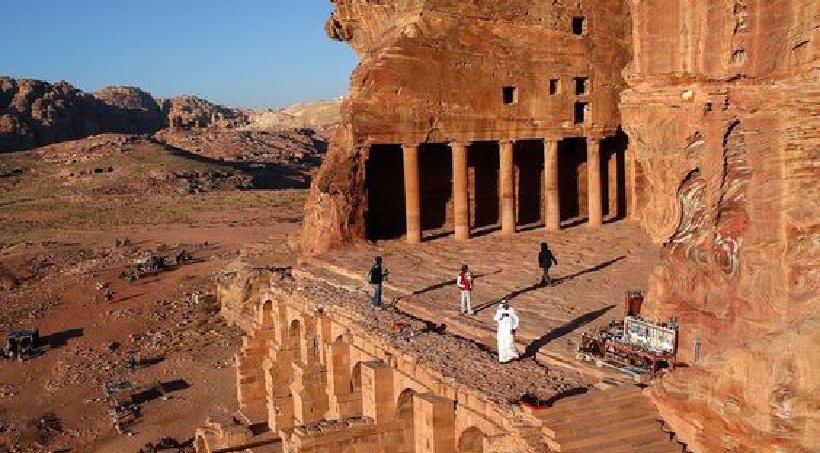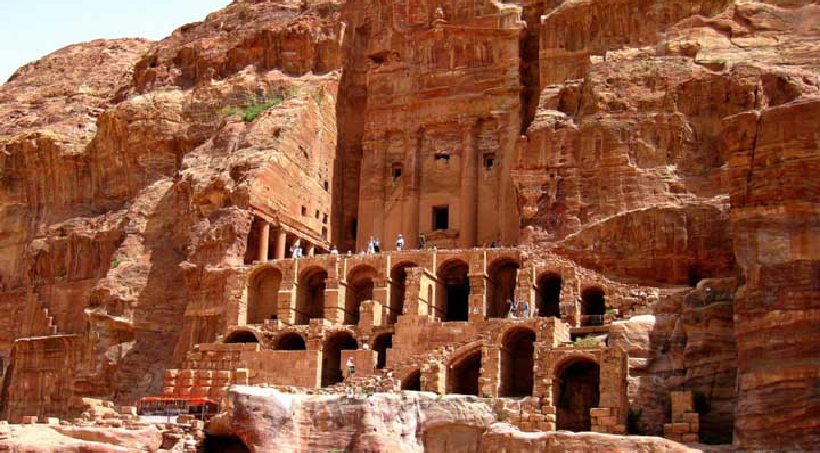Urn Tomb
Urn Tomb
The elegant Urn Tomb is cut deeply into the cliff face at the base of the Khubtha Ridge. Its lofty vertical facade terminates in a pediment topped by an urn-shaped ornament that gives it its name .You may also hear it referred to as 'Al Mahkama' (the Court), a name originating from the local Bedouin who believed it was used as a courthouse and that the vaults downstairs were prisons.It is actually a Nabataean tomb. Above the tomb's entrance is a central burial cell (or 'loculus'), which would have held the body of the person to whom the was dedicated. He is immortalized by a portrait bust that adorns the stone panel used to seal the burial. The two other excavated grave loculi in the facade may have been used for the burial of spouses or close family members. The Urn Tomb complex, with its deep courtyard flanked by colonnaded porticos, faces directly toward Petra's main temple, Qasr al-Bint. The tomb's pivotal location and grad scale suggest that its owner was a Nabataean king; its spacious interior boasts a vast internal chamber 17 meters deep with four burial loculi in its rear wall. The two central recesses were re-carved in the form of an apse when the tomb was converted to a Christian church. A painted inscription records the monument's consecration as a church by Bishop Jason in 447 AD.



